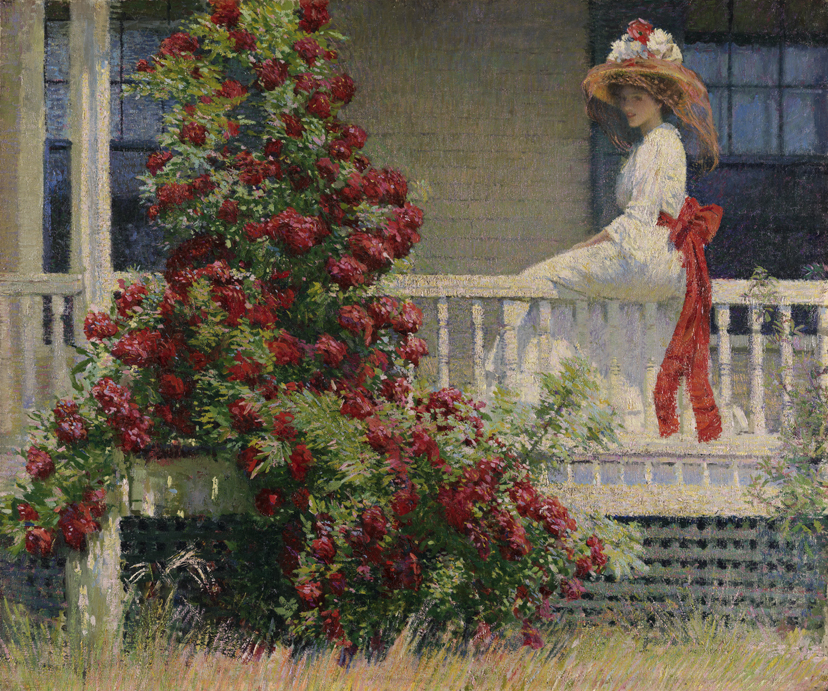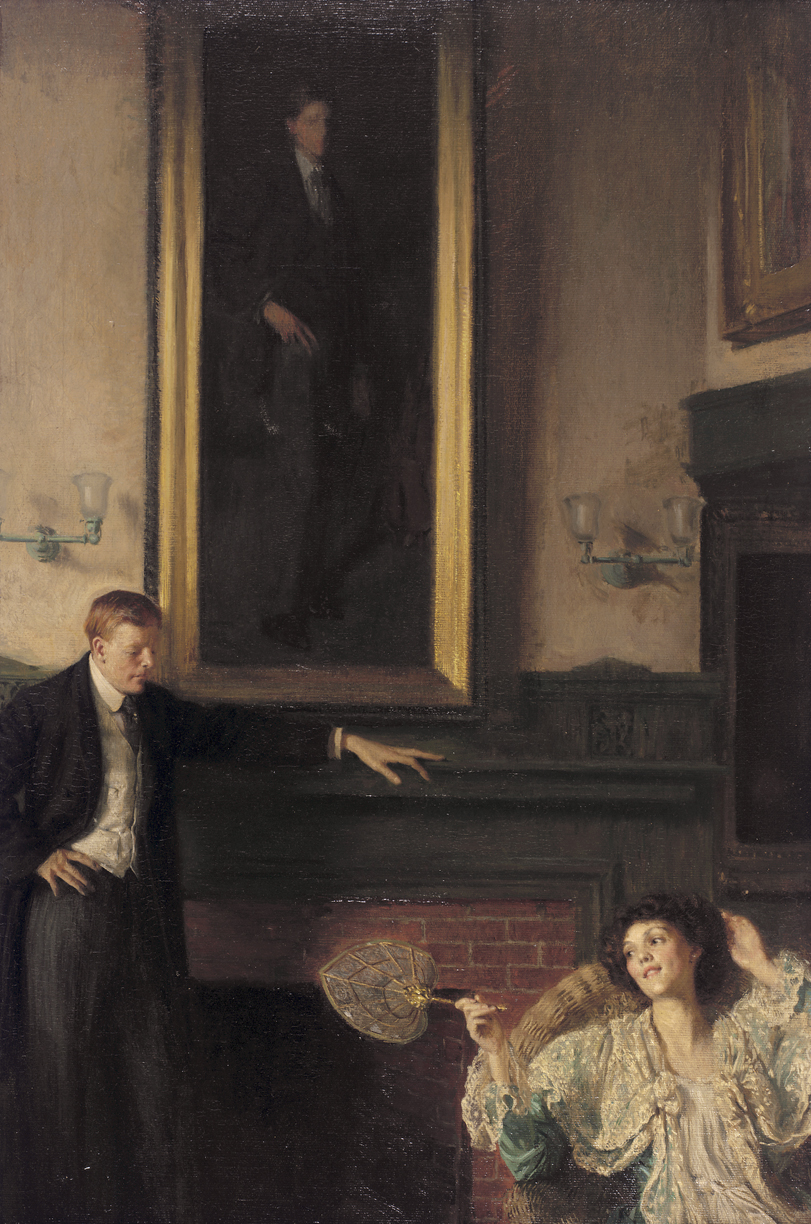
The Crimson Rambler
Philip Leslie Hale
Born into a prominent Boston family, Hale studied at Boston's School of the Museum of Fine Arts and New York's Art Students League before attending the Ecole des Beaux Arts and the Académie Julian in Paris. Although both French schools trained artists in the academic tradition, Hale was drawn to Impressionism. His experimentation with this new mode of painting was strengthened by his friendship with a fellow American painter, Theodore Butler, who was Claude Monet's son-in-law. Hale returned to Boston in 1890 and developed a reputation as a highly influential art critic, author, and teacher, regarded as the de facto leader of the "Boston School" of Impressionists. Hale was a member of the Pennsylvania Academy's faculty and played a critical role in introducing Impressionism to Philadelphia.
"The Crimson Rambler," purchased after its exhibition in the 1909 Pennsylvania Academy annual, is typical of Hale's impressionist style, with its linear treatment of the figure in a freely brushed setting of light and color. Hale's specialization in visions of idle, decorative women of fragile, "floral" beauty has been interpreted as a visual response to his objection to the women's suffrage movement. It was painted at the home Hale shared with his wife, the painter Lilian Westcott Hale, in the Boston suburb of Dedham; the couple's daughter Nancy has identified the sitter as Rose Zeffler.
Artist
Date of Birth
(1865-1931)
Date
ca. 1908
Medium
Oil on canvas
Dimensions
25 1/4 x 30 3/16 in. (64.135 x 76.67625 cm.)
Accession #
1909.12
Credit Line
Joseph E. Temple Fund
Copyright
No known copyright restrictions
Category
Subject
We're so excited you're planning to visit PAFA!
Make time for art — visit us Thursday to Sunday.
Before reserving your tickets, please review helpful information about museum hours, accessibility, building access, and special admission programs.
If you have any questions, feel free to reach out to us at visitorservices@pafa.org — we’d love to help!
